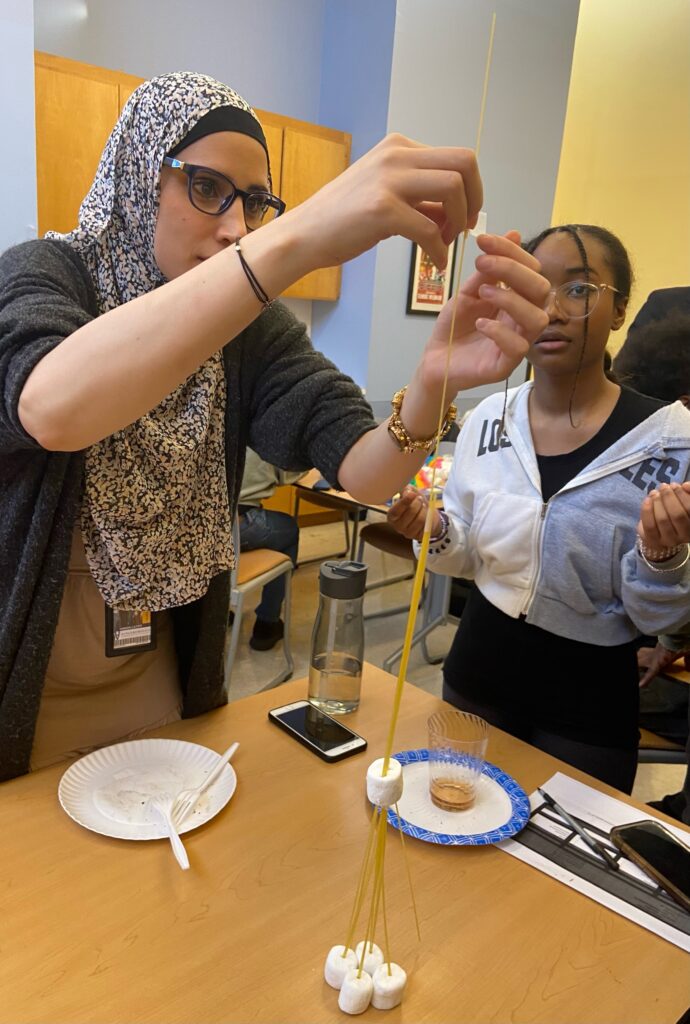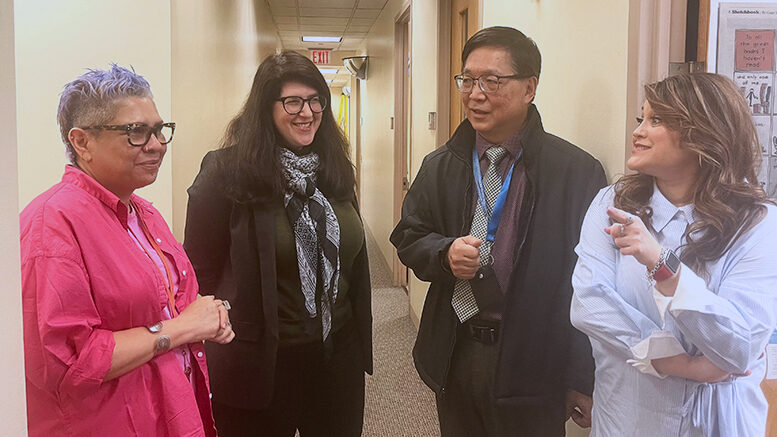To ensure greater equity among teaching students’ digital literacy — and to ensure that they can confidently and enthusiastically deliver such instruction to their diverse populations of students — the City University of New York (CUNY) in 2022 rolled out a four-year, $14 million initiative to incorporate such content for those planning to teach pre-K through 12th grade.
Given that 50% of CUNY freshmen come from New York City Public Schools, and 30% of new teachers in the city graduate from CUNY, the Computing Integrated Teacher Education (CITE) program will have a particularly concentrated effect within the five boroughs, says Aankit Patel, director of STEM education programs for CUNY, who adds that well-funded suburban schools typically can “layer on” professional development that otherwise exacerbates inequities.
“We have an ability to affect what’s happening in that (city) system,” he says of CITE, which has grants from Google, Gotham Gives, the New York City Department of Education and the Robin Hood Learning + Tech Fund, the initial and catalyzing funder. “By making sure that all teacher candidates are trained to integrate computing and digital literacy into instruction, we can have a big impact on computer education.”
Goal markers
Intermediate goals for the initiative include not only building computing pedagogical and content knowledge in teacher candidates but also helping them understand the equity issues surrounding computer literacy and how that affects the diverse students they will serve, Patel says.
The CITE initiative also hopes to help education faculty partner with leadership committees of professors across departments as well as the library and dean’s office to build long-term sustainability for computing integration.
“We have to figure out how this articulates with our senior college partners, so students are prepared for the things they’re going to see when they enter the four-year institutions,” he says.
Growing and evolving
CITE started as a pilot project in 2019, came online fully last May and will continue through the summer of 2026, Patel says.
“It’ll evolve over the course of the four years,” he says. “We’re doing our best to reach as many faculty as possible. We want to help faculty we reach build their careers around computing education, build the research and think about leadership.”
The out-years of the initial grant will focus more on sustainability.
“We’re trying to build capacity at the colleges so that they can continue to access funding and resources that are being poured in the computing education,” Patel says. “We would like CUNY colleges to be in a position to say, ‘We have the capacity to train teachers and help all sorts of learners, including adult learners.’”
LaGuardia Community College has moved eagerly down that road, says Michele deGoeas-Malone, chairperson and project lead for CITE as well as co-director and a faculty member in the education program. She says that along with the grant money, changes in the state’s computer science literacy standards in 2020, around the same time the pandemic hit — which highlighted inequities in digital literacy — also have driven the effort.
deGoeas-Malone believes the campuses across CUNY, including the senior colleges to which many two-year students will transfer, are starting to align classes and activities, making potential transfers smoother.
“We’re ahead of the curve,” she says. “We’re pleased to work with that group. The respect we get for our time and commitment is unbelievable.”
Moving beyond add-ons
Like other schools, Kingsborough Community College has experienced at least a two-decade development over time of how to incorporate computers into education programs, says Stuart Parker, chair of the behavioral science department.

“The first approach was an add-on — build a lab, and teach kids coding during 7th period,” he says. “Now, there’s a recognition that we need to integrate these things at young ages — this is how we do math, this is how we do sciences. We use technology in all these different ways to aid our teaching.”
Not all teachers are adept at incorporating the new technologies rolling out seemingly every day into their classrooms, says Denise Farrelly, lead facilitator for CITE as well as program director and assistant education professor at Kingsborough.
“In the same way people are math-averse, you have many people coming into our program saying, ‘I don’t do technology,’” she says. “We’ve gotten to a point where teachers can’t opt out of that anymore. We want to prepare teachers to integrate this technology … into their coursework and classrooms.”
Kingsborough education professors also have had the professional development beginning last summer and continuing into this school year, Farrelly says.
“We learned how to incorporate computational thinking skills at the early childhood level,” she says. “So that when they get into the older elementary grades, they can start working on computational practices, and they already have that as part of their learning system.”
Kingsborough probably had 50 to 60 teacher education candidates in the first semester working with the artifacts developed for the courses.
What’s ahead
The team continues to develop elements that it hopes will add to the effort. For example, one that Farrelly herself created, aimed at computational thinking and data visualizations in an elementary math course, will become an “exciting, hands-on project-based activity or module,” she believes, although the course isn’t being official offered yet.
“Fortunately, it’s a four-year initiative,” she says. “We’re in the process of strategic planning for the next three years, looking at ways to embed artifacts throughout the scope and sequence of the curriculum to ensure that the students are going to interface with these different literacies at different points in the program.”
Kingsborough is building out a dedicated “maker space” to create the artifacts based on a list of technologies and unplugged activities to support computer literacy among the various age cohorts teacher education students will serve, Farrelly says.
“Special educators are thinking about, ‘How can we make this universally designed?’” she says. “Secondary ed folks are thinking about, ‘How can we use these technologies, to support, for example, folks who want to become high school biology teachers?’ Early childhood folks are thinking about how to translate this to hands-on, play-based, joyful experiential learning.”
Whereas a couple of decades ago, teacher education work around technology often focused on getting students to use the technology, Farrelly says, “this iteration, there’s a big push for having students get under the hood — not just learning how to use the technologies but understand how the technologies work, and code the programs themselves. Even for the teachers who are already comfortable and confident using computers in their teaching, there’s another layer for them to deepen their learning, as well.”
And that dovetails with the overarching goal of CITE, to close the equity gap between students of affluent and more modest backgrounds, Parker says.
Next-steps for Kingsborough include field trips to different maker spaces around the city to see how they’re put together, a site faculty retreat to reflect in some depth on the progress and challenges to date, and a research project into the impact of digital literacy artifacts on first-year students’ confidence, competence and self-efficacy, Farrelly says.
“We’re hoping that by next year, we will have all full-time and some adjuncts involved in the work so that it is a program-wide initiative,” she says.

